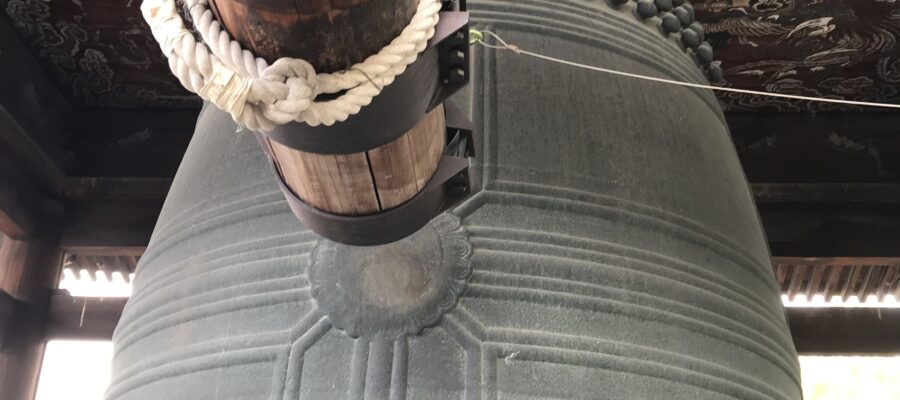方広寺の梵鐘
京都国立博物館の企画展に時々ご招待いただくことがあり、その際に近くの豊国神社をお参りすることがあります。さらに、その横に大きな梵鐘を吊るした鐘楼がポツンと立っています。
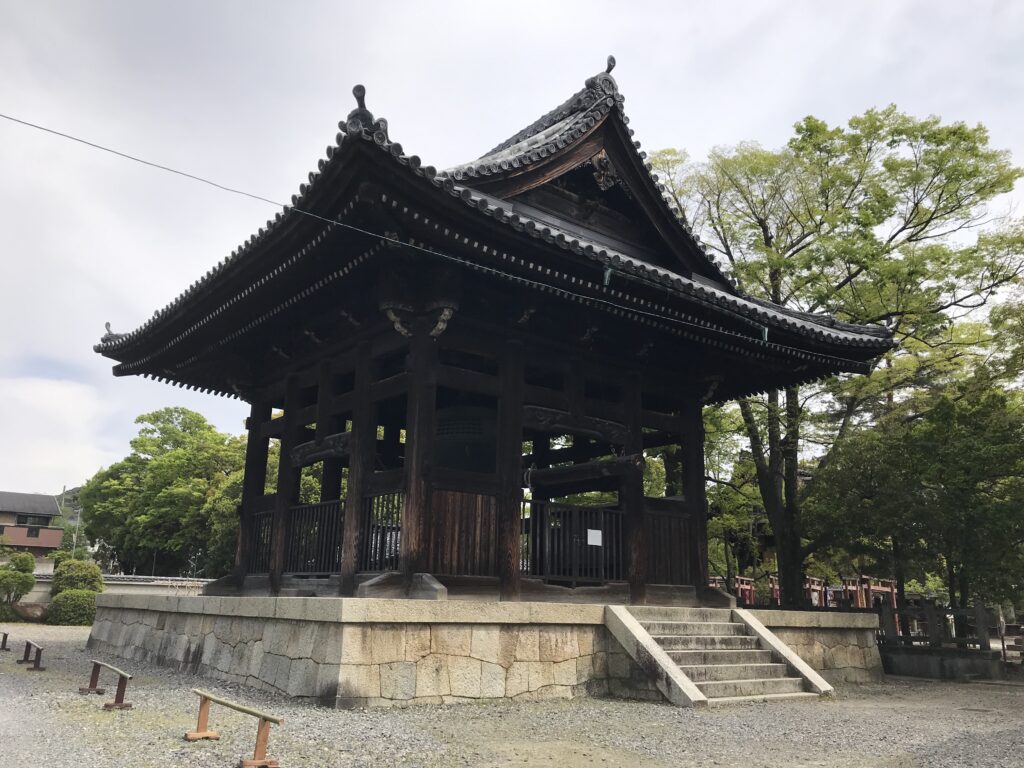
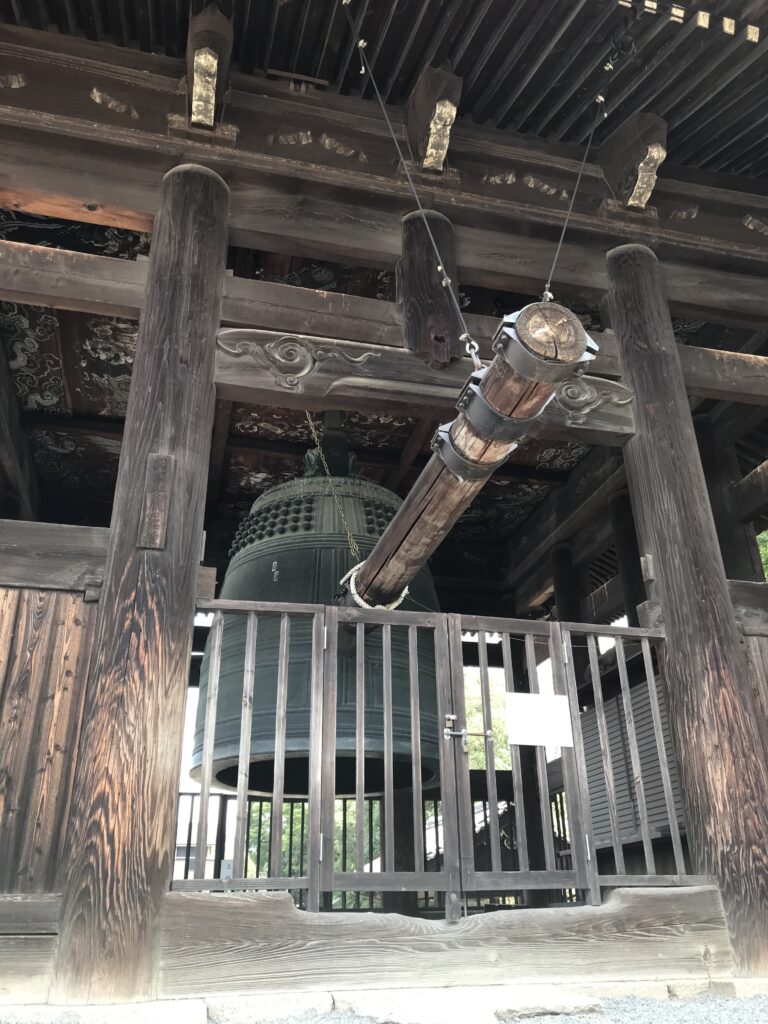
梵鐘の写真を載せますが、何の鐘かお判りでしょうか。このように鐘楼ができたのは明治に入ってからで、それまでの200年以上、地面に放置され風雨にさらされていたそうです。そのため、鐘に彫られた文字もすっかり消え失せていて、私が見たところ、確認できませんでした。
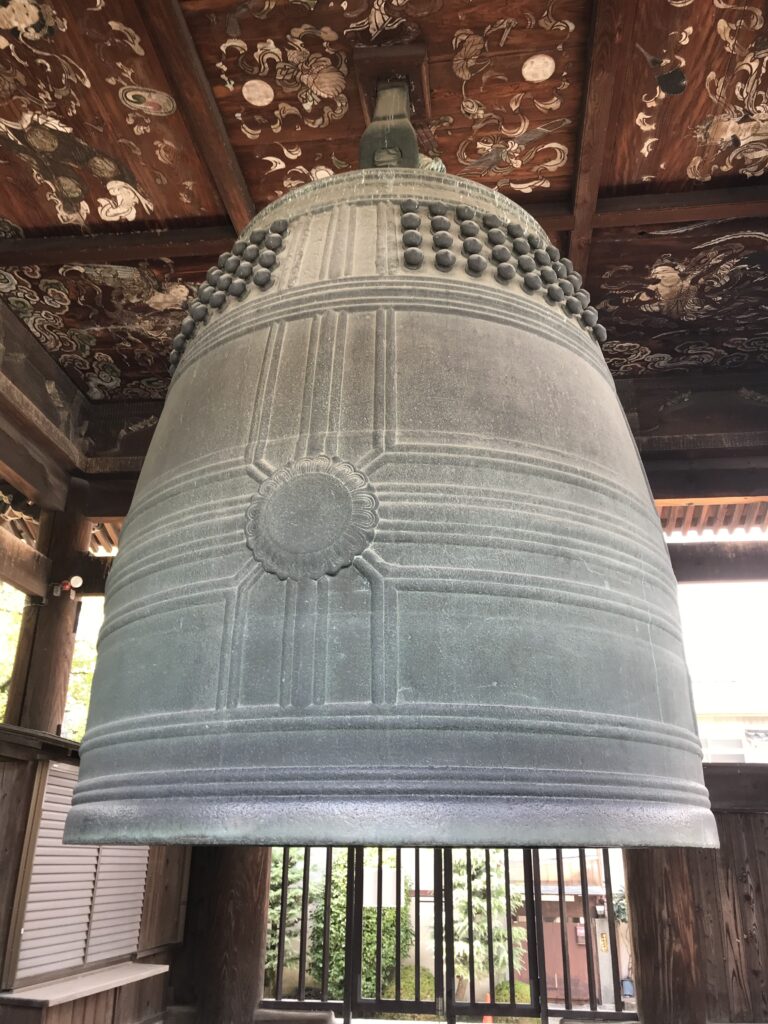
国家安康の銘鐘
これは、いわゆる国家安康の梵鐘と呼ばれ、徳川家康が豊臣秀頼に言いがかりを付けた、例のいわくつきの鐘です。海外の方に紹介するには物語が複雑になってしまいますが、三十三間堂からも、それほど遠くないので、戦国武将に興味を持つ外国人には喜ばれるかもしれません。
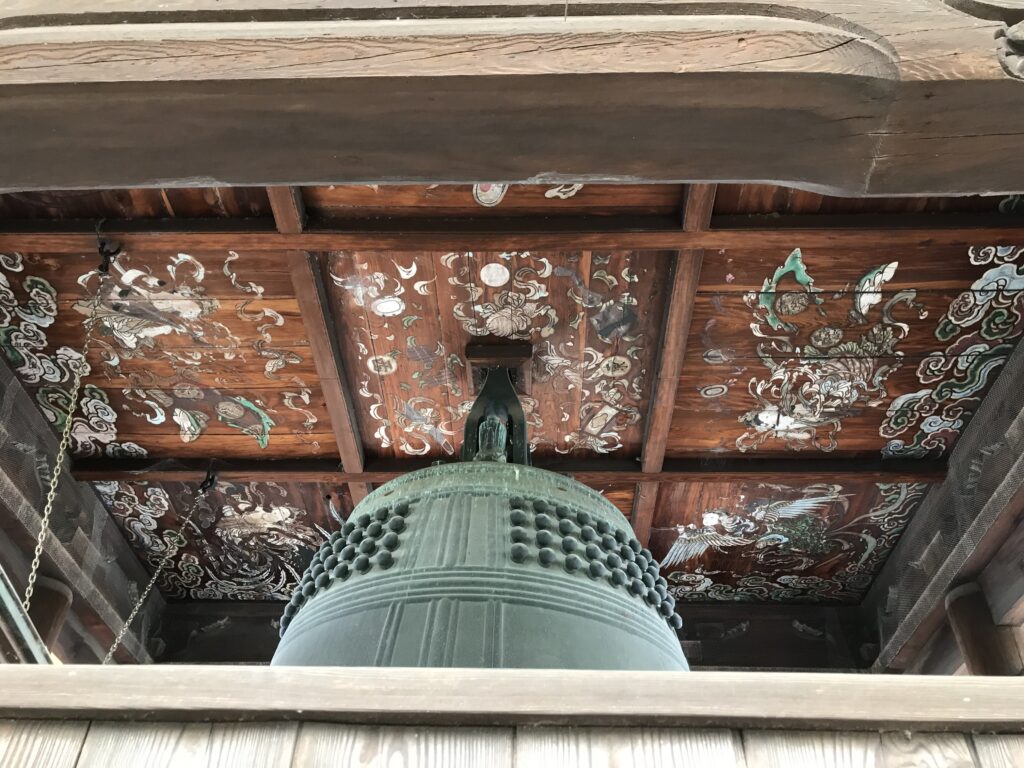
今回、鐘楼に張られている説明文書を読みましたところ、大坂夏の陣で豊臣家滅亡後、鐘は徳川家より呪いの鐘とされ、地面に置き鳴らされなくなったそうです。何か呪いにまつわる事件があったのでしょうか?今に伝わる伝説を聞かないため、なぞは深まるばかりです。
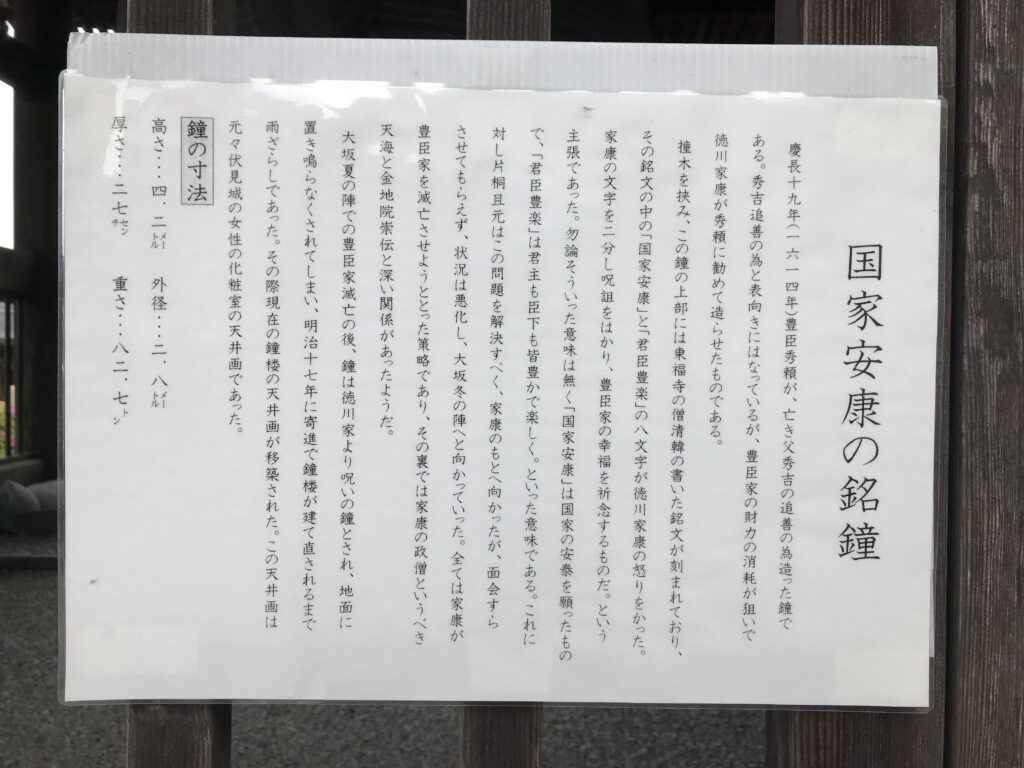
御朱印をもらえず
何度か、方広寺にうかがっていますが、タイミングが悪いのか、本日は休業との張り紙がしてある日ばかりで、いまだに御朱印をいただけていません。大阪城近くに住んでいて、どちらかと言えば豊臣方なので、どうか次回訪問時には御朱印をいただけますように、お願いいたします。(完)
京都をよく知るための書籍
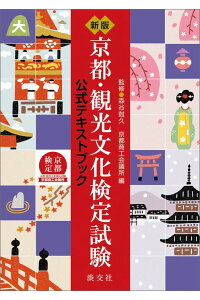
新版 京都・観光文化 検定試験 公式テキストブック 公式テキストブック [ 京都商工会議所 ]
価格:2,420円
(2021/9/11 14:06時点)
感想(5件)
Hokoji Temple (English)
Hokoji temple bell
I am sometimes invited to special exhibitions at the Kyoto National Museum, and on these occasions I visit the nearby Toyokuni Shrine. There is also a bell tower with a large bell hanging from it.
Here is a photo of the bell, I hope you can guess what it is. The belfry was not built until the Meiji period (1868-1912), and until then it had been left on the ground for over 200 years, exposed to the rain and winds. The carvings on the bell have completely disappeared and I could not see them.
Bell of “Kokka Anko”
This is the so-called bell of “Kokka Anko” and is the bell on which Tokugawa Ieyasu made his accusations against Toyotomi Hideyori. The story of this bell is too complicated to introduce to foreigners, but it is not far from Sanjusangendo temple, so foreigners interested in the warlords may be pleased.
This time, I read the explanation on the belfry that after the fall of the Toyotomi family in the summer siege of Osaka, the bell was considered a curse bell by the Tokugawa family and was placed on the ground and not rung anymore. Was there an incident related to the curse? The mystery only deepens because I do not hear the legend handed down to this day.
Not getting a red seal
I have been to Hokoji Temple several times, but due to bad timing, I have not been able to get a red seal yet as there is always a sign saying that the temple is closed today. As I live near Osaka Castle and am more of a Toyotomi side person, I hope I will be able to get a red seal on my next visit. (End)
Temple Hokoji (français)
Cloche du temple Hokoji
Je suis parfois invité à assister à des expositions spéciales au musée national de Kyoto et, à cette occasion, je me rends au sanctuaire Toyokuni tout proche. On y trouve également un clocher auquel est suspendue une grosse cloche.
Voici une photo de la cloche, j’espère que vous pourrez deviner de quoi il s’agit. Le beffroi n’a pas été construit avant la période Meiji (1868-1912), et jusqu’alors il avait été laissé sur le sol pendant plus de 200 ans, exposé à la pluie et aux vents. Les sculptures sur la cloche ont complètement disparu et je n’ai pas pu les voir.
Cloche de “Kokka Anko”
C’est la cloche dite de “Kokka Anko” et c’est la cloche sur laquelle Tokugawa Ieyasu a porté ses accusations contre Toyotomi Hideyori. L’histoire de cette cloche est trop compliquée à présenter aux étrangers, mais elle n’est pas loin du temple Sanjusangendo, donc les étrangers intéressés par les seigneurs de la guerre peuvent être satisfaits.
Cette fois, j’ai lu l’explication sur le beffroi selon laquelle, après la chute de la famille Toyotomi lors du siège d’été d’Osaka, la cloche a été considérée comme une cloche de malédiction par la famille Tokugawa et a été placée sur le sol et n’a plus été sonnée. Y a-t-il eu un incident lié à la malédiction ? Le mystère ne fait que s’épaissir car je n’entends pas la légende transmise jusqu’à ce jour.
Ne pas obtenir un sceau rouge
Je suis allé plusieurs fois au temple Hokoji, mais à cause d’un mauvais timing, je n’ai pas encore pu obtenir un sceau rouge car il y a toujours un panneau indiquant que le temple est fermé aujourd’hui. Comme je vis près du château d’Osaka et que je suis plutôt du côté de Toyotomi, j’espère pouvoir obtenir un sceau rouge lors de ma prochaine visite. (Fin)
